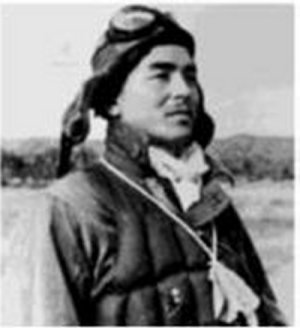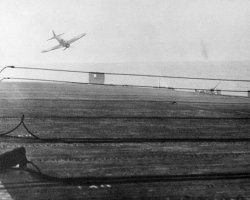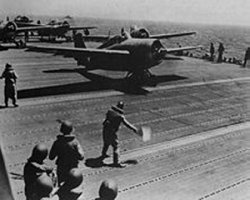 |
It is possible that Nishizawa was the most successful Japanese fighter ace of the war; he personally claimed to have had 87 aerial victories at the time of his death. Some uncertainty is due to the Japanese habit of recording victories for pilots' units, rather than the individual, after 1941, as well as the often wildly-exaggerated claims of aerial kills that were frequently accepted. Some sources credit Nishizawa with over 100 victories. Born on the 27th of January 1920, the son of a sake brewer. In June 1936, a poster caught his eye, an appeal for volunteers to join the Yokaren (flight reserve enlistee training program). Hiroyoshi applied and qualified as a student pilot in Class Otsu No. 7 of the Japanese Navy Air Force (JNAF). He completed his flight training course in March 1939, graduating 16th out of a class of 71. In October 1941 he was transferred to the Chitose Kokutai, with the rank of petty officer 1st class. After the outbreak of war with the Allies Nishizawa's squadron (chutai) from the Chitose Air Group then flying the obsolete Mitsubishi A5M, moved to Vunahanav airfield on the newly taken island of New Britain The squadron received its first Mitsubishi Zeros (A6M2, Model 21) the same week. On the 3rd of February, Nishizawa, still flying an obsolete A5M, claimed his first aerial kill of the war, a PBY Catalina; historians have confirmed, however, that the plane was only damaged and managed to return to base. On the 10th of February, Nishizawa's squadron was transferred to the newly formed 4th Air Group. As new Zeros became available, Nishizawa was assigned an A6M2 bearing the tail code F-108. On the 1st of April, Nishizawa's squadron was transferred to Lae New Guinea and assigned to the Taina Air Group. There he flew with aces Saburo Sakai and Toshio Ota in a chutai (squadron) led by Junichi Saai. Sakai described his friend Nishizawa as about 5-foot-8, 140 lb (64 kg) in weight, pale and gaunt, suffering constantly from malaria and tropical skin diseases. Accomplished at judo, his squadron mates, who nicknamed him the "Devil," considered him a reserved, taciturn loner. Of his performance in the air, Sakai, himself one of Japan's leading aerial aces, wrote, "Never have I seen a man with a fighter plane do what Nishizawa would do with his Zero. His aerobatics were all at once breathtaking, brilliant, totally unpredictable, impossible, and heart-stirring to witness." They often clashed with USA and RAAF fighters operating from Port Morseby. Nishizawa's first confirmable solo kill, of a USAAF Air Cobra , was on the 11th of April. He claimed six more kills in a 72-hour period from 1Ė3 May, making him a confirmed fighter ace. Nishizawa was a member of the famed "Cleanup Trio" with Saburo Sakai and Toshio Ota. |



